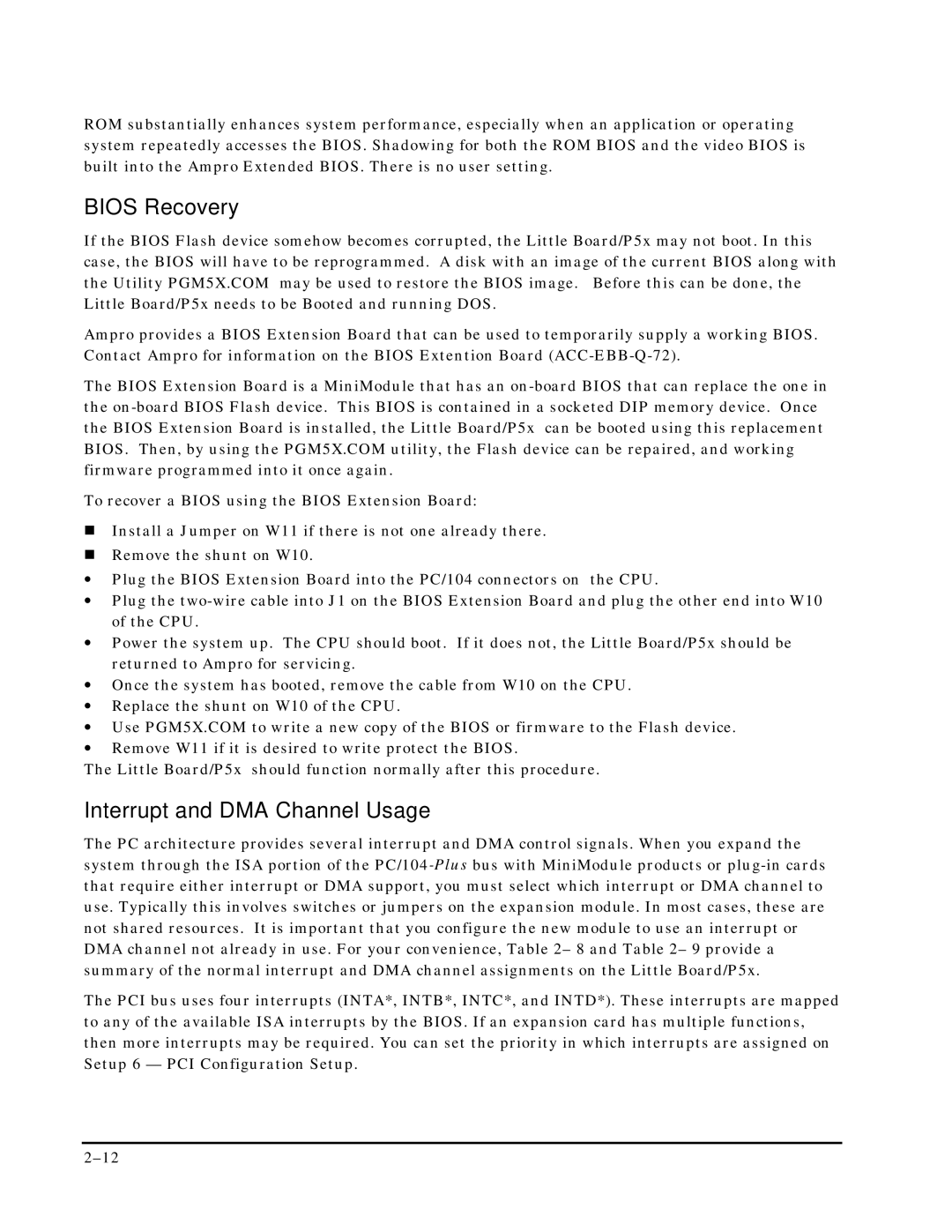ROM substantially enhances system performance, especially when an application or operating system repeatedly accesses the BIOS. Shadowing for both the ROM BIOS and the video BIOS is built into the Ampro Extended BIOS. There is no user setting.
BIOS Recovery
If the BIOS Flash device somehow becomes corrupted, the Little Board/P5x may not boot. In this case, the BIOS will have to be reprogrammed. A disk with an image of the current BIOS along with the Utility PGM5X.COM may be used to restore the BIOS image. Before this can be done, the Little Board/P5x needs to be Booted and running DOS.
Ampro provides a BIOS Extension Board that can be used to temporarily supply a working BIOS. Contact Ampro for information on the BIOS Extention Board
The BIOS Extension Board is a MiniModule that has an
To recover a BIOS using the BIOS Extension Board:
!Install a Jumper on W11 if there is not one already there.
!Remove the shunt on W10.
•Plug the BIOS Extension Board into the PC/104 connectors on the CPU.
•Plug the
•Power the system up. The CPU should boot. If it does not, the Little Board/P5x should be returned to Ampro for servicing.
•Once the system has booted, remove the cable from W10 on the CPU.
•Replace the shunt on W10 of the CPU.
•Use PGM5X.COM to write a new copy of the BIOS or firmware to the Flash device.
•Remove W11 if it is desired to write protect the BIOS.
The Little Board/P5x should function normally after this procedure.
Interrupt and DMA Channel Usage
The PC architecture provides several interrupt and DMA control signals. When you expand the system through the ISA portion of the
The PCI bus uses four interrupts (INTA*, INTB*, INTC*, and INTD*). These interrupts are mapped to any of the available ISA interrupts by the BIOS. If an expansion card has multiple functions, then more interrupts may be required. You can set the priority in which interrupts are assigned on Setup 6 — PCI Configuration Setup.
